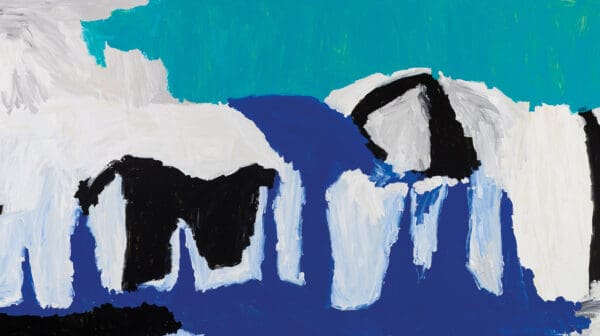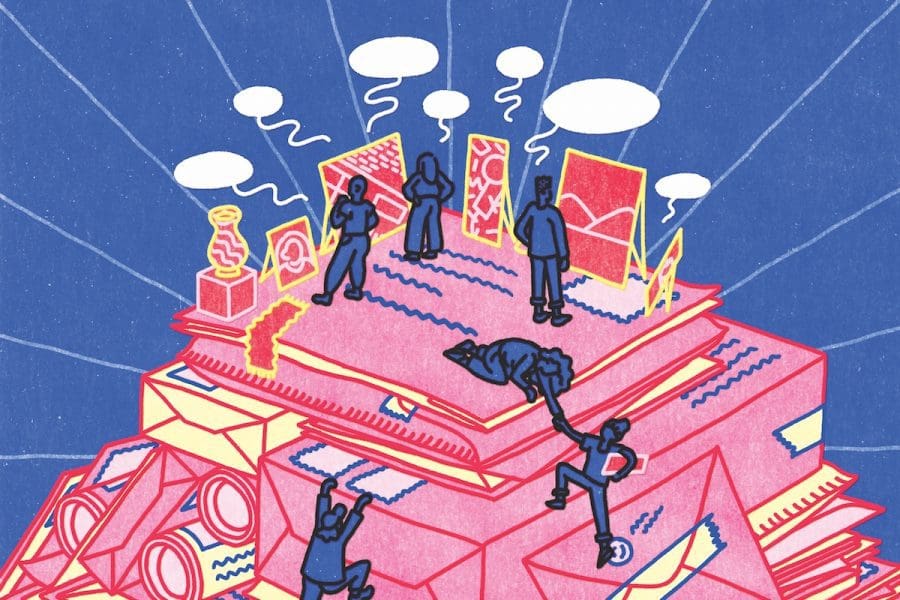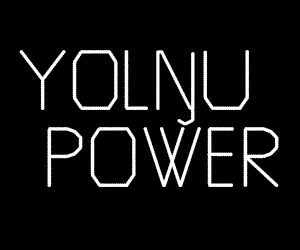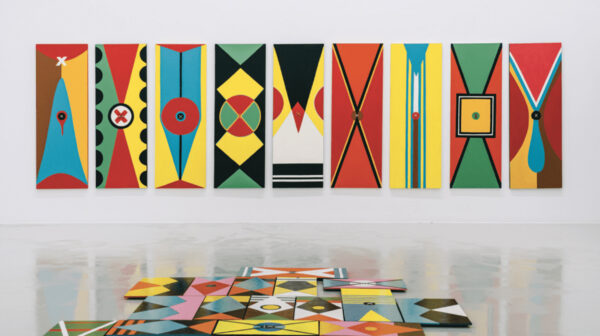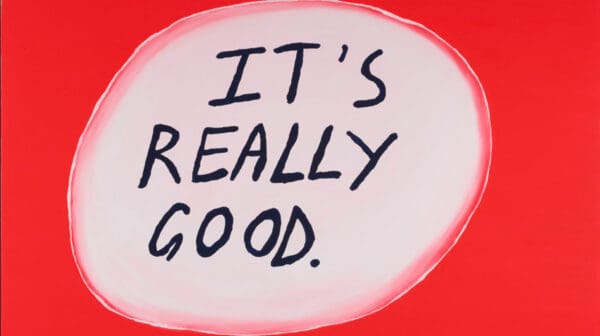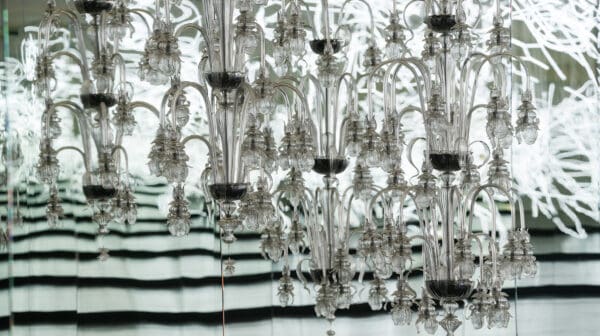In August, I received a surprise package in the mail—four fridge magnets displaying bright neon green translucent swords in various configurations. I recognised the sword immediately as work ceramicist EJ Son had been creating this year. Sharing their process over Instagram, the original sculpture O-E GUM was exhibited at Sydney’s Knox St Window Gallery in July. When translated to Korean O-E 오이 means ‘cucumber’ and GUM 검 means ‘sword’: three cucumber swords were radiating out from this small public space for a month, but not everyone had been able to physically see the work. Instead, the magnet version of the project that I received has connected EJ Son with over 50 other people via the postal service.
It’s a small but sure way for people to engage with this work—just think about the many times a day we open the fridge, especially considering how much more time we’re now spending at home. At a moment when art institutions and galleries have understandably gone digital, many artists have swung the opposite way; they’ve used the digital to go postal. With vast numbers of exhibition and residency opportunities postponed or cancelled for many artists this year—whether due to the initial coronavirus lockdowns or ongoing restrictions—it’s been a particularly difficult time for artists. In response, creatives are taking things into their own hands; connecting with community outside of institutional and digital infrastructures. The arts community has been embracing how the digital realm can provide not only new creative and financial opportunities, but new ways for artists to truly engage with people via physical art objects. As the recipient of a number of postal ventures—collecting, sharing, and enjoying an array of artworks—I’ve been left feeling far more connected to my community during this time of distance and disruption.
For instance, the new project Pots of John was started this year by ceramicist Anna John, who moved back to Broome after working alongside Laure Provoust for the recent Biennale of Sydney. I’ve always been a fan of John’s artistic practice and when Pots of John launched on Instagram, I reached out for a special commission. The dialogue between us was open and responsive, and I felt very involved. For John, this new project has been a springboard to produce new functional ceramic works and continue honing her skills, creating larger commissions alongside scores of smaller editions of mugs, soap dishes and incense holders. Given that John has been geographically isolated by Western Australia border closures since March, this special project has kept her connected to her peers on the east coast.
The process of meshing the digital with the postal can also be found where art meets fashion. Artist Roberta Rich has been facilitating the distribution of Coloured™ wearable art since a 2016 residency in Johannesburg, South Africa. The wearable art varies in form; gold text on black is used as a metaphor for the richness and wealth of Coloured identities, while the rainbow text on white fabric satirically references the ‘rainbow nation’ title South Africa received post-Apartheid. Seeking to ignite conversation around reclaiming language and identity through the wearer, Rich has connected with many people requesting Coloured™ jumpers during lockdown across Australia and overseas. The project has then had a second life on social media, with fellow people of colour posting and sharing content of themselves in Coloured™ attire, generating a clique of individuals who are separated geographically yet connected through a shared pride in their own cultural identities.
In saying this, curators haven’t completely neglected the potential for ‘mail art’. Recently independent curator Jessica Clark shared an experimental project she’s been working on with David Sequeira, director of Margaret Lawrence Gallery at Victorian College of the Arts. Their project, The Box: Death Transformation Rebirth, attempts to answer a simple question: how do you generate experiences of intimacy with art during a pandemic? The curatorial duo then invited eight contemporary artists to contribute works compact enough to be packed into a small box, which were mailed out to 10 households in lockdown. Each recipient will host these artworks in their homes over the course of a week, and are invited to document their installations across social media before de-installing and posting the curated exhibition to the next recipient. It’s an inventive and tactile solution to that lingering feeling of wanting to share exhibition experiences online.
Another collaborative postal project that began during the pandemic—a project that I’m involved with—is the series Collaborative Racist Paintings by Phuong Ngo. The artist has been sending peers two wooden panels painted in a selected Oriental colour range (yes, these paint names do exist), along with instructions on where to source a colonial postcard and how to affix it to the board to complete the work. My contribution included pasting a postcard of an unknown kisaeng–a Korean woman whose skill set ranged from being a royal entertainer to a courtesan, while also being held at the lowest rank of society.
Sourcing such postcards is part of Ngo’s practice, and engaging his personal networks to create these new pieces has been an ingenious way to stay connected during lockdown. By gifting the works to each co-author, Ngo ensures that these pieces now reside across the entire country. Should these works ever be requested by an art museum or gallery for display, Ngo’s invitation to multiple authors means that institutions will need to issue multiple loan agreements, and include each person’s name in any text created about the works. The emphasis here is to acknowledge multiple authors, and share the power one artist holds within an institution. It subtly challenges institutional ways of working—and if the pandemic has revealed anything this year it’s that structurally, things need a shakeup.
Many of these smaller contributions are now evolving into larger projects: an experimental short film, a solo exhibition with a digital component, an ongoing curatorial methodology, and a breadth of work to support a PhD. Even though the past year has felt tumultuous, scary and difficult, it has also been fruitful, allowing the arts community time to experiment with new ways of making and sharing artwork. While the future of the arts remains unknown, all I know is that when I open my fridge I smile thinking of EJ Son’s cheeky nature; when I top up my Pots of John with vegetables I feel warmth; when I wear my Coloured™ jumper in Zoom meetings I feel proud; and when I glance up at my racist painting to see an unnamed kisaeng looking back at me, I feel connected to my community.
